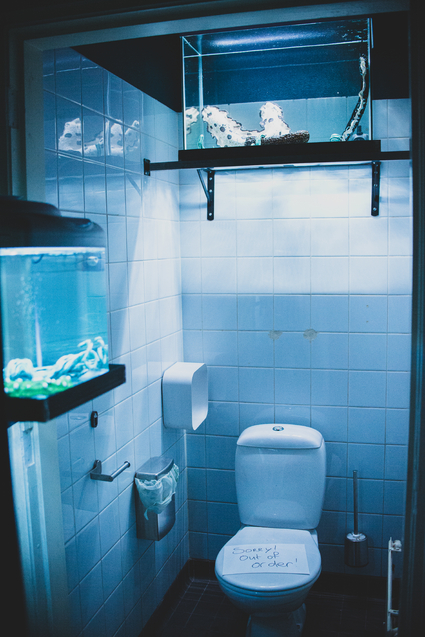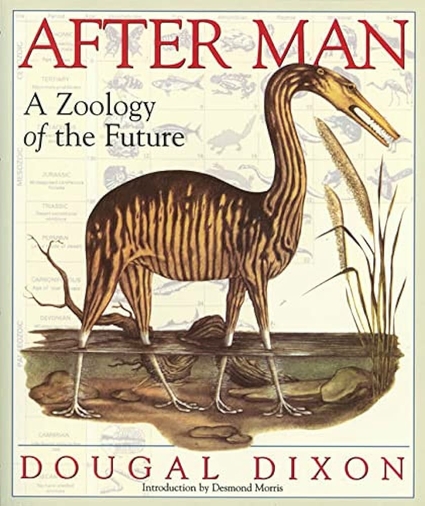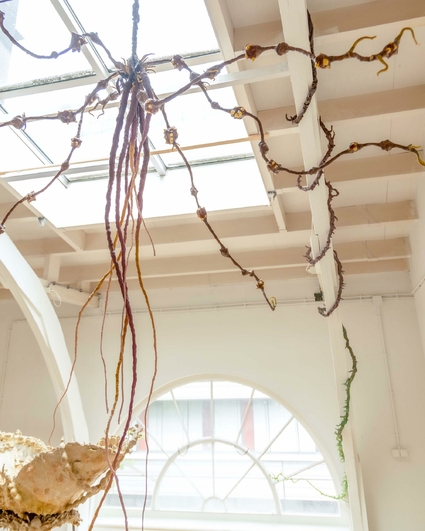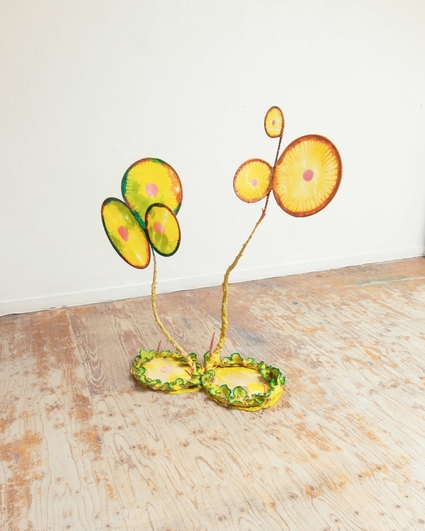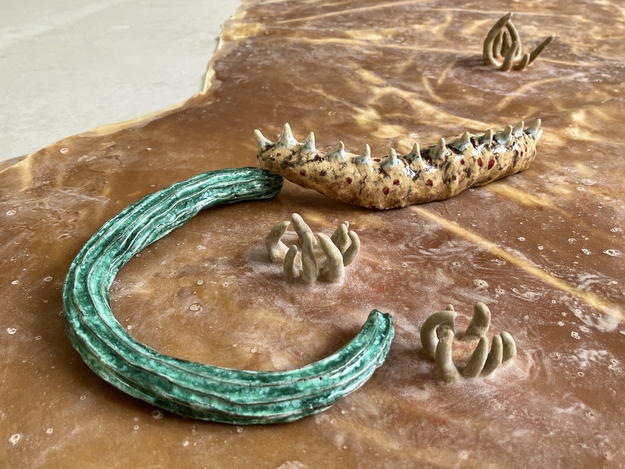Q: Hi Silke! Can you tell us a bit about yourself and your journey as an artist so far?
A: I'm from Copenhagen in Denmark, born and raised in the city center. But I’ve spent a lot of my life in nature with my grandparents who live on beautiful Danish islands. Nature and especially the ocean have been a really big inspiration for me.
Before coming to KABK, I spent half a year at a very specific Danish folk high school for art. You live in a really big house, a castle or farm, and you have courses but you don't get graded. You just live there and commit to it, and it was a nice push towards changing the limits of my art. Before that, I used to only paint, but there I finally tried more large-scale sculptural things. This is where I made most of my portfolio for KABK.
Without having ever been to the Netherlands before, I then came to study in KABK’s Fine Arts department, in the autonoom section. I graduated this year!
Q: Congratulations! How do you feel your art practice has evolved over the years? Your sculptural work takes such a unique material form.
A: Last year, in 2022, I went on exchange to Vienna, the site specific art department of the University of Applied Arts (die Angewandte). That was really a turning point for me as an artist, because in my first two and a half years at KABK, I felt kind of lost. I was trying things out like crazy, but I still couldn’t quite get to the core of what I'm interested in.
In Vienna, the stars just aligned. I had two amazing courses at the same time. One was on mould making for casting, with a really cool latex artist. She told me that latex is also called 'the tears of the trees', which I love so much, and showed me all the possibilities of working with natural latex.
Simultaneously, I was taking a course called 'How to Apply World Building Tools from Science Fiction Writing onto your Artistic Practice'. I always really loved the aesthetic of science fiction, this idea of a magical layer to reality is really interesting to me. In this course, I was introduced to a book called 'After Man: A Zoology of the Future' by Dougal Dixon. It’s an amazing book from the 80s. The author is an evolutionary scientist who imagined, based on his research, what all the species on Earth could look like fifty million years after humans have gone extinct.
So I had the latex, and then I had this course. And then we did an exercise where we needed to imagine a species, write it down and make it. There was clay on the table, and I wanted to glaze it, but I knew I didn’t have time to do that. Alongside it, I had the latex, and I knew I could color the latex. So then I made a little clay model, covered it in latex, and that was the first version of my artistic practice now!
From there on, I just started experimenting, and actually making it into this method that I'm now using. It was very lucky timing – I came back ready for my graduation year with a clear aesthetic that was my own and a narrative that didn't feel like I was compromising anything.
Q: Exploring alternate futures and ecosystems has been a recurring theme in your practice. How do you feel that your work engages with climate change?
A: Through this aspect of talking to people about the future through the lens of science fiction, I really felt like I had healed this gap between my personal self and my artistic self. Since I was a teenager, I have really struggled with climate anxiety. I think as a maker or producer of anything, it can be very contradictory – I want to have the freedom to create my visions, but also, I'm so aware of every consequence of every action and it paralyzes me sometimes.
So now I'm making mainly botanically-inspired speculative species from a future shaped by climate change. For me, the important part of it is not only to educate on climate change, because I really think that we all know about it. I'm much more interested in having conversations about our fear and our dreams and hopes as a generation.
Q: Can you share what your process is like when you have these speculative ideas for species and you materialize them into your sculptures? What kind of research goes into that?
A: A lot of my current inspiration comes from my background as a florist, and the two years I spent working in a flower shop. The flower industry and flower bouquets, I really love how it's just accepted that it's something that doesn't last forever. My sculptures also don't, they transform and fall apart because of the nature of latex. And then my research is based on these little books, something between an index and an encyclopedia, which have drawings of all the flora from specific regions of Denmark for example.
I have a lot of these books, and to start, I just flick through and mark things that catch my eye.
I'm very interested in hybrids and evolution from something that already exists. It's not only botanical, but also a lot of invertebrates. Deep sea invertebrates, they just look like aliens and they're very inspiring to me. A lot of the inspiration is also just walks and biking – and mythology. I really like myths and folklore.
And then I'm really a Think-While-I'm-Making kind of artist, so a lot of it comes while I'm working with the materials. While I'm doing it, I remember something that kind of looks like this shape I just made and then I go back in my little archive on my phone or google it. I would say in that way my research is often very rhizomatic in my little head.
Q: I remember reading how you’ve described your research process as a root system before– I love that description so much! Could you tell us how your installation at Mediamatic has taken shape, what is it about and what we can learn from the sea cucumber?
A: Yes! The installation is called ‘Some breathe through their butts’, referring to the fact that sea cucumbers breathe through their butts. The installation takes inspiration from cucumber curvatures and the fascinating life of sea cucumbers and their poop. I thought it was quite interesting to explore sea cucumbers and plant cucumbers as one species, a kind of hybrid of a cultivated and an endangered species. The cucumbers are an example of mass production, we eat so many cucumbers. The 1980s EU curvature laws also tried to impose a “normal” shape on a species that is naturally different and curved. And then sea cucumbers are this little sad animal in the ocean that is seen as just sort of gross, but it's actually very beautiful. In Danish, it's called a sea sausage or sea poop.
Sea cucumbers are really cool, and I read an article where they’re called the ‘unsung heroes of the ocean’. Basically, they just roam around and eat sand all day long and poop the sand out. But the amazing thing about this process is that it releases calcium carbonate, which helps coral reefs rebuild their structure. So they are a crucial part of helping corals protect themselves against the acid levels in the oceans that are rising due to climate change and causing corals to die. I think it shows how the ecosystems that already exist are so important and such an otherwise insignificant animal is really a key actor here.
The installation title is also a bit of a joke, because it will be a functioning bathroom. So if you go there and use the toilet, you will also have your butt out. There will be this moment of being maybe a little bit similar to the sea cucumber. Essentially, I wanted to convey the feeling that while you’re in there, you're not quite sure if you're underwater or deep in the forest and it's both like a greenhouse with cucumbers and a fish tank with sea cucumbers, so it's a habitat for both of them. And you!
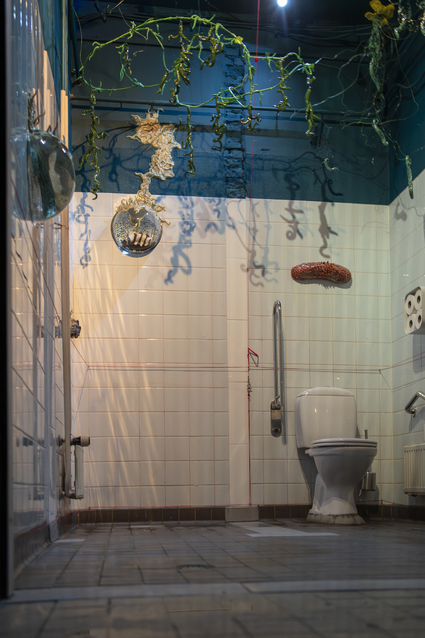
Q: Your work also really embraces aspects of decay and transformation. Since the installation in Mediamatic will run for a year, people will be able to notice some of these changes. What drew you to creating ephemeral art?
A: Yes, all of my works are in the process of decaying. For me, that started by just being fascinated by latex as a natural material that you cannot stop from changing. I’m very inspired by memento mori from the Baroque era, like the vanitas symbolism, these old symbols that you also see in folklore and religion a lot.
I really hated this feeling in art school of being pushed to make things that last, they have to be strong and not crack because in 500 years they could be the next masterpiece that someone will learn about in art school. I thought it was very refreshing to look at a thing that is kind of alive but maybe more in the process of dying, like when you pluck a flower, right? It is vibrant but you can not stop it from dying and you also appreciate it for that. So for me this aspect of transformation and decay became quite a relief. Making things that just exist with me, they live and change together with me and mimic this life process.
I think in general, ephemeral art is really interesting in the 21st century. It becomes this representation of uncertainty. I'm not even sure there will be space to care about art in people's minds in 50 years. We also live in a different world with our phones and the digitalisation of everything. So even as my sculptures disappear, they never completely disappear because they are on phones and computers.
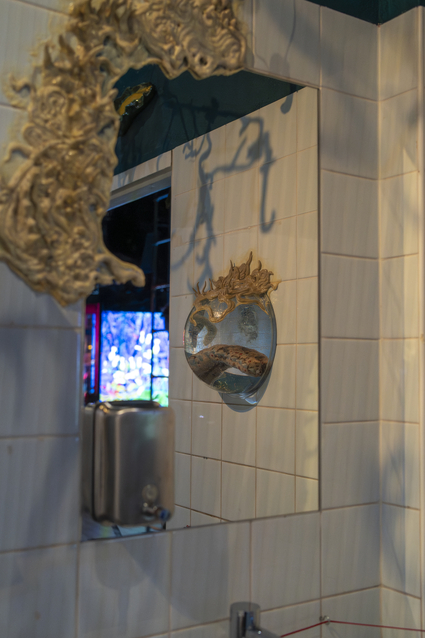
Every time you see my sculptures, they look a little bit different. At Mediamatic, they’re site specific, so when the installation is done I’m very excited to see what it will look like and how it will change. Because I don’t burn the clay, I can also re-harvest the clay from the sculptures and rehydrate it, so it becomes a kind of circular process!
Q: We recently had an A/artist talk on navigating the discomforts of art school, especially for neurodivergent students. What was your own journey like?
A: I think it’s important to make it clear that I’m not autistic, so I can’t speak for people who are navigating that particular experience. As for art school, I’m one of these people who just really love going to school, especially when it’s something I care about – so for me going to an art academy was not at all like being in school. I didn’t think that when I stayed at school working until closing time that I was doing homework or doing it for someone, I was really just so excited that I could spend four years doing only this!
I get obsessive – I like doing repetitive things so most of my time in school I would just sit still for eight hours straight and do one thing until a teacher came to talk to me. But my hyperfixation made me very stressed. I say yes to a lot of things, and I almost burned out in my first year. I just want to give everything that I have every time I do anything.
Silke Riis producing her installation work "Some Breathe Through Their Butts" -
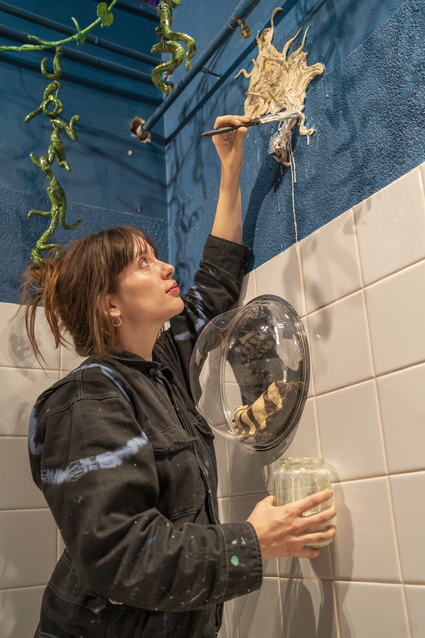
I could easily live in a small room and just do my thing, but that’s not necessarily how you become better. I think it was healthy for me that I was in a social space, having a network of people involved in what you’re doing – you don’t have to explain everything because they’re with you in the studio. I think that’s one thing that’s very valuable in art school.
Of course it’s also hard to be in an environment where you do feel like you have to constantly produce something or you’re not doing enough. I learned to understand that when you are an artist, every moment of your life is actually part of your practice, you don’t really ever have a break, and I really felt that and still feel it.
Q: Thank you for sharing all of that! Is there anything else you want to add that feels like it might be crucial information?
A: Maybe that I invite people to gently touch my work. For me that’s a very big part of art in general. We’re so trained to never touch artworks – and I understand why, but I think when you work with something, even a painting, you get to touch it all the time and there’s definitely a sensory aspect to it. It’s a big part of my work. But it also gets more and more fragile the more people touch it, so – gentle is the keyword. And don’t touch my artworks if you are allergic to latex! That’s really important.
